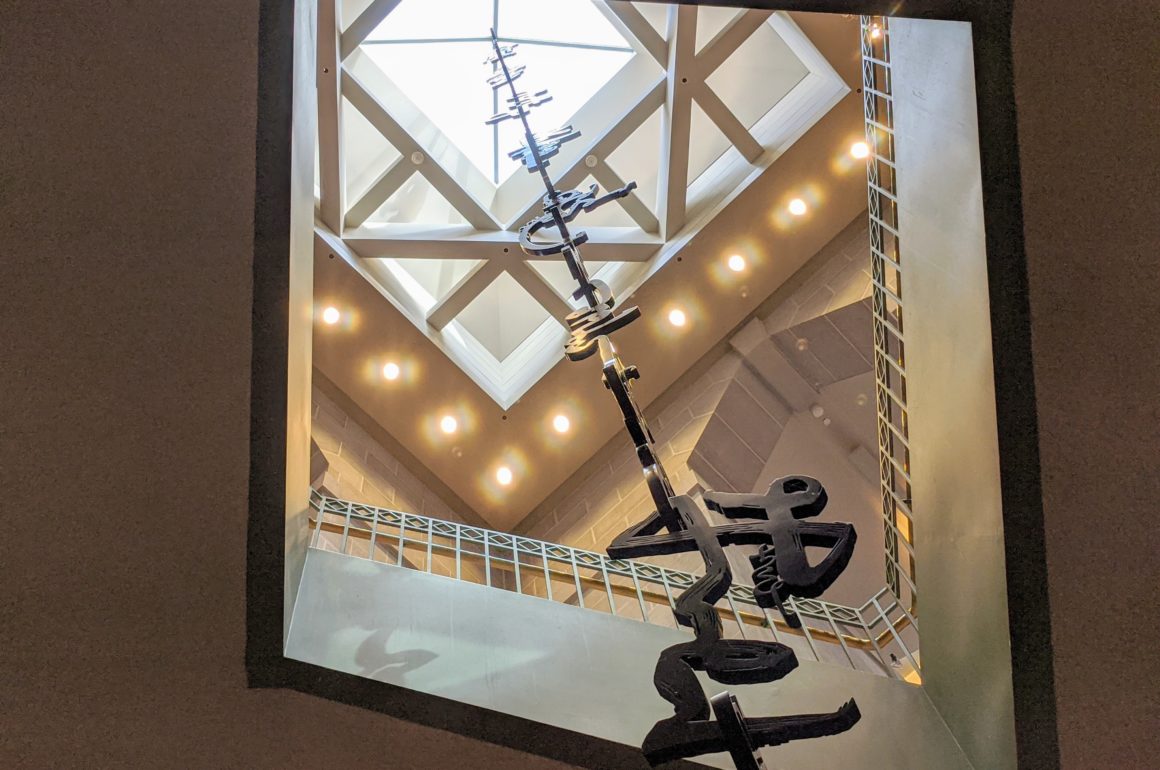
What I don’t know about art could fill a book, but I know what I like and that’s all that matters, right? What’s that old saying, beauty is in the eye of the beholder? It’s common knowledge the museums of the Smithsonian Institute in Washington, DC are well-known and highly regarded. However, it’s not so commonly known that the Sackler and Freer Galleries, together form the Smithsonian’s museums of Asian Art. They may not be as well-known, but they are definitely well-worth visiting.
The Sackler & Freer Galleries
- “The best introduction to art is to stroll through a museum. The more art you see, the more you’ll learn to define your own taste.” Jeanne Frank
Truth be told, we never actually focused on the fact that the Sackler Gallery, along with the Freer Gallery are Asian Art focused. It wasn’t until after several visits that we realized the connection. We’ve just always enjoyed the exhibits and collections of both museums, which happen to be right next to each other on The National Mall.
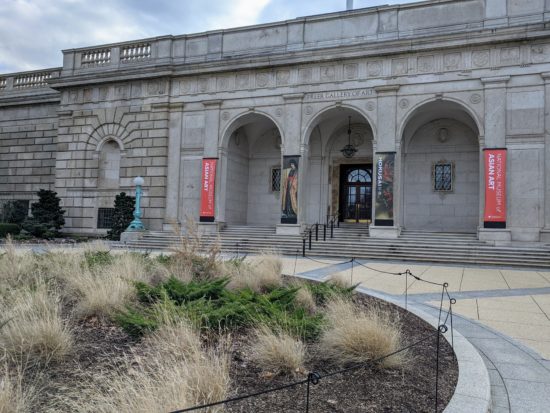
The Freer Gallery
Although it is somewhat small in scale compared to the larger Smithsonian Museums, the Freer is where we take all guests when we put on our Washington, DC tour guide hats. There is a sense of calm in the Freer. Perhaps it’s because the museum is seemingly not as popular with tourists, or maybe it’s due to the collections and exhibits that lend themselves to serenity. Either way, it’s lovely.
Opened to the public in 1923, the Freer collection was actually given to the nation, by Charles Freer, in 1906. The gallery is home to art from countries such as China, Egypt, Korea, and Japan, as well as a wonderful collection from the Islamic countries.
The Peacock Room
When we take guests to visit the Freer, our first stop is always the Peacock room as it is by far my favorite space in the gallery. Pictures don’t do the room justice. One must step inside and lose oneself in the beauty of the room and the incredible collection of Chinese blue and white porcelain. It never disappoints.
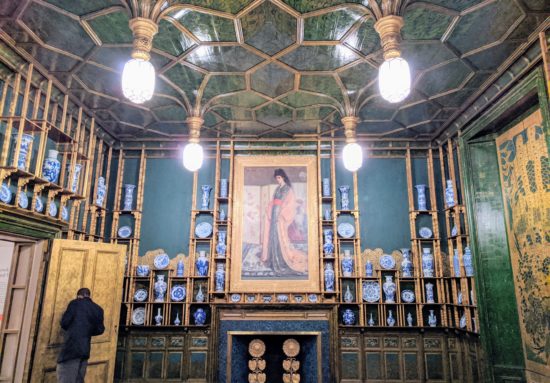
Briefly explained, the Peacock Room was once a drawing room in the home of Frederick R. Leyland, a British shipping tycoon. After Leyland’s death, Charles Freer purchased the Peacock Room and installed it in his Detroit home. Yep. The whole room. Think about that for a minute and imagine the undertaking of such a thing. Kind of mind-blowing don’t you think? The Peacock Room is on permanent display in the Freer Gallery. It truly is extraordinary and should not be missed.
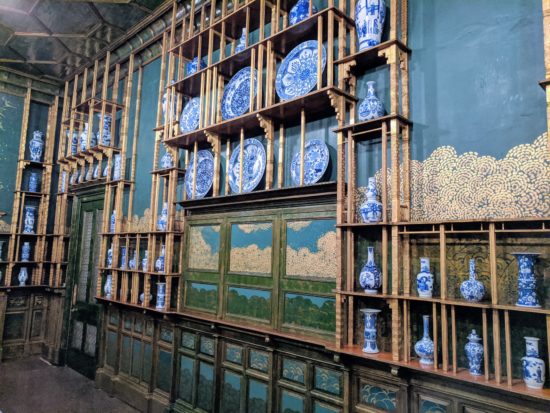
It can be said that what we especially appreciate about the Sackler and Freer Galleries is the fact that they are smallish. When we visit the National Gallery of Art, which is one of our favorites, we often feel a bit overwhelmed because there is so much to see and experience. It’s a fantastic museum, we love it, but we usually visit in small doses.
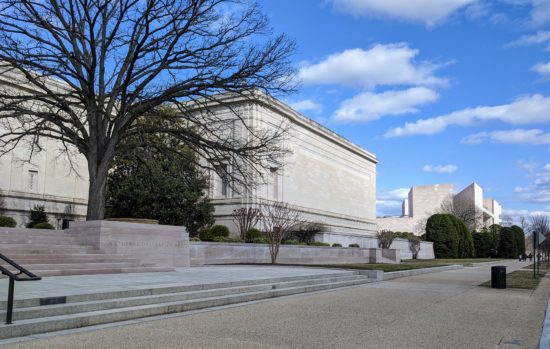
The Sackler Gallery
The benefactor of the Sackler Gallery, Dr. Arthur M. Sackler, donated the necessary funding and 1,000 pieces of art from his private collection, to establish the Sackler Gallery. The governments of Japan and Korea also contributed to the construction of the gallery in order to share and promote art and culture.
The gallery opened to the public in 1987 and became the second official Smithsonian Museum of Asian Art. The building sits right next door to the Freer Gallery, which makes it super convenient to visit both museums.
- “One wonderful day in 1950 I came upon some Chinese ceramics and Ming furniture. My life has not been the same since.” Dr. Arthur M. Sackler
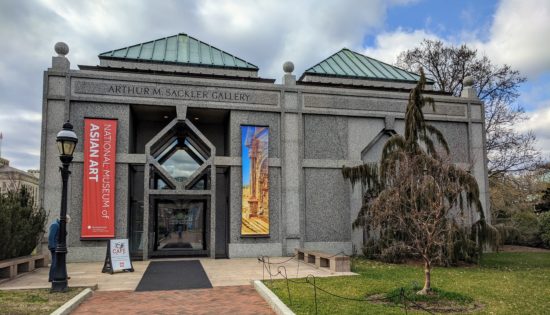
Six Women Photographers
Our most recent visit to the Sackler Gallery was for the purpose of taking in a special temporary exhibit titled, My Iran: Six Women Photographers. The entrance and introduction to the exhibit was a powerful moving portrait of an Iranian woman. A video portrait that ever so slowly (at first we didn’t realize it was a video) focuses in on the woman and her surroundings. It was truly mesmerizing.
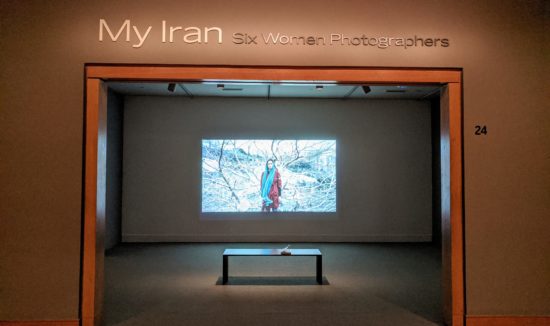
Briefly explained, the six women photographers, through the lens of their cameras, portray the people and culture of Iran, a country so often misunderstood by the western world. Each woman tells a story, some with just a single shot and others with a series of photos. Some of the photos were captured within the borders of Iran, while others portrayed memories. The presentations of the photographs were simple and clean which allowed the visitors to focus on the photographs.
- My Iran: Six Women Photographers is no longer at the Sackler at this time of this post.
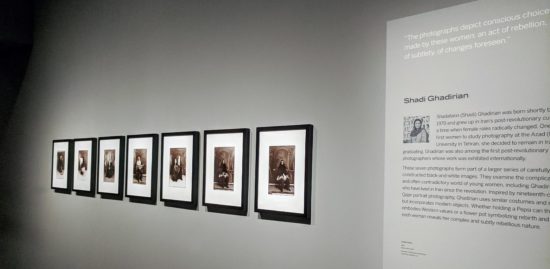
Age Old Cities
Although we went to the Sackler with the intention of seeing My Iran: Six Women Photographers, we happened upon an extraordinary exhibit titled, Age Old Cities: A Virtual Journey from Palmyra to Mosul. We weren’t at all prepared for what we saw as we made our way through the exhibit which was organized by the Arab World Institute, Paris and created in collaboration with UNESCO.
- “A visit to a museum is a search for beauty, truth, and meaning in our lives. Go to museums as often as you can.” Maira Kalman
Briefly explained, the exhibit is a digitally created look at the devastation of war. As visitors pass through the exhibit, large ceiling to floor projections show the devastation of war focusing on the cities of Palmrya, Aleppo and Mosul. What’s fascinating about the projections is that they are digitally overlaid with outline images of what once stood in a particular spot and what could be rebuilt in the future. All the while, smaller screens show the same scene when the cities were intact, before war, at different periods of time. The technology is amazing.
- Age Old Cities: A Virtual Journey from Palmyra to Mosul will be at the Sackler until October 25, 2020.
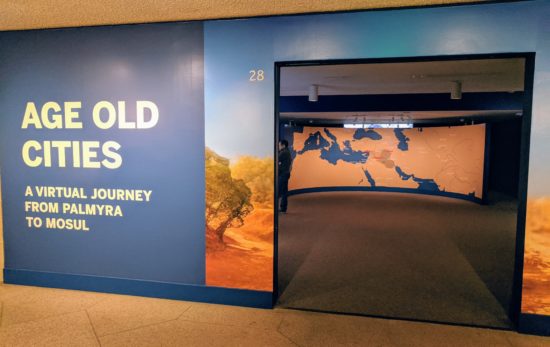
Why Visit a Museum
I’m the first to admit that if we’re traveling with limited time, we might choose not to visit a museum. Not because we don’t find value in museums, quite the opposite, but because if we’re limited on time we want to make sure we take in the highlights of the city. Of course, there are always exceptions to the rule. I mean, one doesn’t go to Paris without visiting the Louvre or the Prada in Madrid.
With that being said though, if time allows we will definitely find our way to a museum, and a bakery… but that’s another story. Here’s a tip: do you have a favorite museum? Follow it on social media. I follow the Sackler and Freer Galleries on Facebook, which is how I learned of the My Iran: Six Women Photographers exhibit.
Washington, DC is a mecca for museums and each one is extraordinary in it’s own right. My favorite is the National Museum of American History with The National Gallery of Art coming in at a close second. If you find yourself in Washington, DC make sure you allow enough time to not only see the highlights of the city, but also a few well-chosen museums such as the Sackler and Freer Galleries.
- “A painting in a museum probably hears more foolish remarks than anything else in the world.” Edmond De Goncourt
If You Go:
- The Freer Gallery – Jefferson Drive at 12th Street
- The Sackler Gallery – 1050 Independence Avenue SW
- Admission is free
- Hours: 10:00 a.m – 5:30 every day. Closed on Christmas Day
- Metro stop: Smithsonian
- A small cafe is in the Sackler Gallery
- Accessible to visitors with limited mobility
- Small gift shop
- Security bag check at entrances
- Limited street parking – take public transit
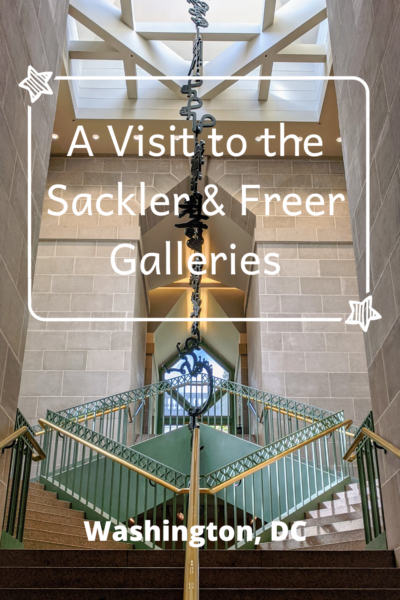





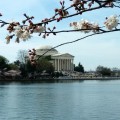
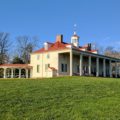



 Instagram Feed
Instagram Feed

I love visiting museums but like you mentioned they can become overwhelming and by the second hour Frank is often ready for a nap or drink or possibly both. I enjoy visiting history museums but if I have to choose one on any given trip, I tend to visit the Fine Arts. Loved all your quotes <3
I can take museums in small doses, or at least movement between galleries, to keep the interest. I definitely have my favorites such as some of Monet’s and Renoir’s paintings. Beautiful. I’m a big history nerd and as such I love the Smithsonian’s National Museum of American History. We visit cathedrals in our travels and think of them as museums. Lots of opportunities to experience art in many forms.